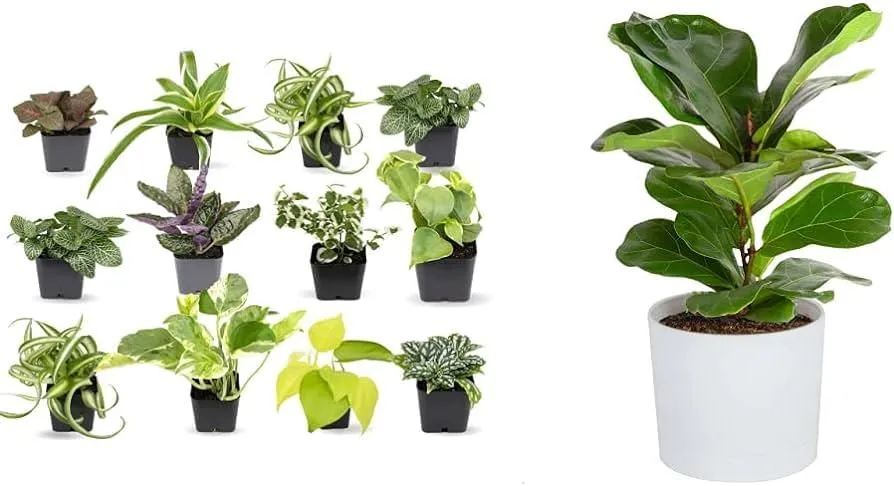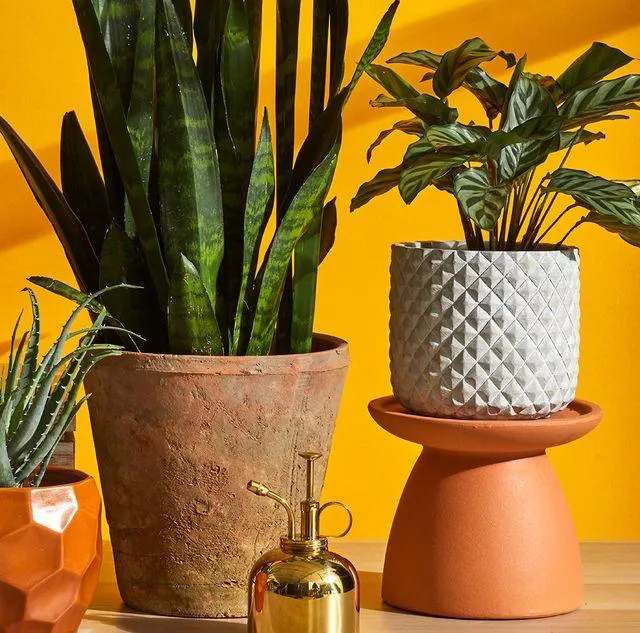The Best Trees to Grow Indoors and How to Care for Them
Whether you live in a small apartment with limited outdoor space or simply enjoy the look and feel of greenery inside your home, growing indoor trees can be a rewarding experience. From my experience successfully caring for indoor trees over the years, there are a few top varieties that thrive with minimal maintenance. In this article, I’ll cover the easiest trees to keep indoors along with tips for watering, lighting, pruning and more so you can have your own miniature indoor forest!
Low Light & High Humidity Trees
- Chinese Evergreen (Aglaonema commutatum) – This tropical foliage plant is one of the toughest and most forgiving indoor trees. Its shiny green or variegated leaves tolerate low light conditions near windows that don’t receive direct sun. The Chinese Evergreen loves high humidity and shouldn’t be allowed to fully dry out between waterings. Propagate new plants by dividing established root balls or stem cuttings.
- Peace Lily (Spathiphyllum) – With its dramatic white blooms and thick, dark green leaves, the Peace Lily thrives in indirect sunlight. Its flowers will wilt if the soil is dry, signaling when it’s time to water. Misting the foliage helps this tropical beauty thrive in lower humidity homes. Keep out of direct sun to prevent leaf burn.
Both the Chinese Evergreen and Peace Lily are excellent options if you only have medium to low light conditions indoors. Their large, lush leaves help clean the air by removing toxins like benzene and formaldehyde. These hardy plants can go several weeks between waterings if their soil dries out slightly.
Low Light & Minimal Care Trees
- Snake Plant (Sansevieria trifasciata) – Commonly called Mother-in-Law’s Tongue, this stiff-leafed succulent thrives on neglect. It can go a month or longer between waterings and prefers dry soil. Place in a bright spot away from direct sun where it will grow tall over time without extra care. Propagate by dividing established root balls.
- ZZ Plant (Zamioculcas zamiifolia) – Another virtual “set it and forget it” plant, the ZZ plant store water in its thick, waxy leaves allowing it to go weeks between waterings. Tolerates low to very low light. Divide root balls or propagate from stem cuttings. An amazing air filtering plant that’s nearly impossible to kill with neglect!
The Snake plant and ZZ plant are true low maintenance indoor trees. From my experience, they continue growing for years with very little human intervention like watering only every few weeks. Both do well filtering toxins with their natural leaf structure if placed in a busy living area.
Medium Light Trees
For medium indoor light, try these attractive indoor tree options that will thrive near a bright window:

- Dwarf Date Palm (Phoenix roebelenii) – With its slender trunk and feather-like fronds, this miniature palm tree makes a stunning statement. Keep the soil consistently moist in bright, indirect sunlight. Fertilize during the spring and summer growing seasons.
- Rubber Plant (Ficus elastica) – With its narrow, pointed leaves on long petioles, the Rubber Plant has a truly tropical appearance. Water when the top inch of soil dries out. Propagate by stem or leaf cuttings in damp potting mix. Warning: it’s toxic to pets if ingested.
- Dracaena species – Includes colorful varieties like ‘Janet Craig’, ‘Lisa’, and ‘Massangeana’ with slender canes topped with deep green, striped or spotted foliage. Water whenever the soil surface is dry. Cut stems can be rooted in water then transplanted. Great air purifying trees!
The dwarf date palm, rubber plant and dracaena species love indirect bright light near windows. They clean indoor air while looking lush with weekly watering and occasional fertilizer in the growing season. All are easy to propagate new plants from stem or leaf cuttings.
Medium to Bright Light Trees
A few tree varieties appreciate brighter indoor conditions near a south or west-facing window:
- Fiddle-Leaf Fig (Ficus lyrata) – With its large, waxy leaves on long petioles, this dramatic tree can reach 10+ ft tall indoors given the right conditions. Water weekly and feed monthly in spring/summer. Bright light but no direct sun which can scorch leaves. Sensitive but stunning!
- Jade Plant (Crassula ovata) – Forms a tree-like structure over time as lower branches or stems become woody and flatten. Water less in winter. Prune or propagate from stem cuttings. Takes direct or very bright sun. A unique succulent tree!
- Dwarf Umbrella Tree (Schefflera arboricola) – Petite imitation of the larger outdoor umbrella tree. Compact leathery leaves radiate from arched branches. Water weekly. Tolerates low light but thrives and blooms under grow lights or sunny windows.
The fiddle-leaf fig, jade plant and dwarf umbrella tree provide gorgeous greenery that happily filters indoor air while treated to brighter conditions near a south or west-facing window. All can grow quite large given several years, so use as tabletop trees or stand-alone specimens.
Now that hopefully covers all the most popular low, medium and brighter light tree options to grow indoors! But which one is right for your home? Here are some final tips from my experience to help you pick the perfect indoor tree:

Choosing an Indoor Tree
- Consider the light levels where you will display the tree. Is it near a dim north window or sunny south exposure? Tree varieties suited to those conditions will fare best.
- Think about your watering habits. If you tend to neglect plants for longer stretches, a Snake Plant, ZZ Plant or Chinese Evergreen that only needs infrequent watering suits your schedule.
- Assess space available and desired size. Large trees like Fiddle-Leaf Figs need room to grow 6 ft tall or more over 10+ years. Dwarfer trees stay tabletop size.
- Factor in care preferences. Low maintenance trees like Snake Plants demand just occasional water compared to fussier, sensitive Fig varieties.
- Consider toxicity to pets or children who may mouth leaves. Some indoor trees like the Rubber Plant contain mild toxins.
- Explore options near you. Check local garden centers, online stores and plant delivery services for tree varieties suited to your growing conditions.
I hope this gives you tons of ideas on the perfect indoor tree matches for the light, space and care levels in your home! After finding the right variety, with consistent watering and fertilizer in the growing season your new tree will thrive for years to come as a beautiful indoor accent. Please let me know if any other questions arise as you narrow down your top choice and get it growing. Happy planting!
| Trees Well-Suited for Indoor Growing | |
|---|---|
| Chinese Evergreen | Hardy tree that thrives in low-light. Water when soil is dry. Prune to maintain shape. |
| Fiddle Leaf Fig | Popular decorative tree tolerates low-light. Water weekly, prune to shape. May drop leaves if environment changes. |
| Dwarf Umbrella Tree | Slow growing with heart shaped leaves. Water weekly, prune dead wood. Bright indirect light. |
| Dwarf Date Palm | Tropical appearance, keep soil lightly moist. Prune wilting fronds. Tolerates low-light as a houseplant. |
| Potted Bonsai | Special care to maintain miniature trees indoors. Daily water, bright light, fertilize monthly. Requires patience and dedicated care. |
FAQ
-
What kinds of trees can I grow indoors?
There are quite a few tree species that basically do okay inside. Some popular choices are Christmas trees, citrus trees like lemon and orange, dwarf fruit trees like apples and pears, and flowering trees like hibiscus and jasmine. At the same time, indoor trees have special needs compared to outdoor trees.
-
How much sunlight do indoor trees need?
Most indoor trees require bright, indirect sunlight for most of the day. However, full sun can kinda burn some trees’ leaves. It seems their natural habitat provides partial shade. Perhaps south-facing windows provide the best light situation. Anyway, insufficient light is a common issue for indoor trees.
-
What type of soil should I use?
You’ll want a soil specially designed for container plants. Regular potting or garden soil does not drain well and can leave your tree with wet roots. Look for a soil that is light and well-draining. A cactus/succulent mix works great. Most indoor tree problems seem related to soil issues.

-
How do I water an indoor tree?
Water indoor trees when the top inch or two of soil is dry. Overwatering is a bigger problem than underwatering, so aim for the light side. And do not let any type of tree sit in water-logged soil. Check the drainage holes to make sure water can escape properly. Maybe put the plant pot in a saucer to catch excess drips.
-
What kind of care do indoor trees need?
Besides watering, indoor trees need occasional fertilizer to keep them healthy looking. Check the instructions for how often to fertilize. Also, trees benefit from occasional wiping of their leaves to remove dust. Pruning may also be necessary sometimes to shape trees or remove dead branches. Pests can sometimes be an issue too.
-
Are indoor trees difficult to care for?
With the right conditions – good light, drainage, and care – indoor trees are perfectly doable. You just have to pay attention to their needs compared to outdoor trees. It’s definitely challenging to mimic their natural habitat indoors. But if you put in some effort, many tree species will reward you with year-round greenery. So in summary – indoor trees are not overly difficult as long as you’re committed to their unique needs.
So in summary, with the proper care, many trees can thrive indoors. Just be prepared to water and fertilize regularly, and find a spot that provides the best combination of indirect sunlight and drainage. Citrus, hibiscus, and dwarf fruit trees seem to do well for a lot of people. Giving your tree the right growing environment is key to keeping it looking its best. By the way, have any other questions about indoor trees? Let me know if you need any clarification or have additional concerns!

